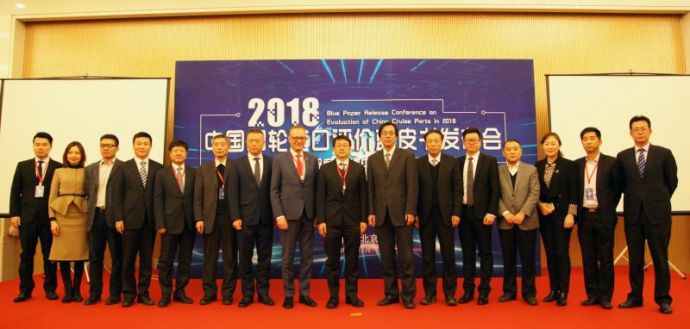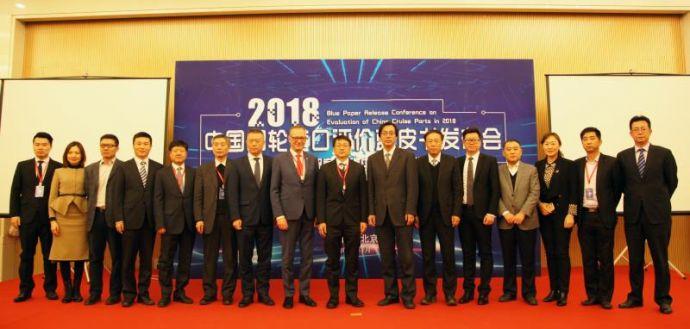
Photo: Release conference of the blue paper on evaluation of China's cruise ports in 2018 held in Beijing on January 9.
BEIJING, Jan. 9 (Xinhua) -- The first blue paper on evaluation of China's cruise ports in 2018 was released in Beijing on Wednesday, aiming to guide China's domestic cruise ports to improve technical facilities, equipment and services and push the cruise industry into a new stage of development.
The report was compiled jointly by China Waterborne Transport Research Institute under Ministry of Transport and China Economic Information Service (CEIS) under Xinhua News Agency.
According to the report, the domestic cruise market is entering a new stage of steady and high-quality development from a rapid development stage. In terms of infrastructure, China's cruise ports have already taken the lead among the global peers. However, in the areas of cruise port operations and port services, a large gap still exists compared with the internationally mature ports.
The report shows that China's cruise ports are unevenly developed. Shanghai Wusongkou International Cruise Terminal, Shenzhen Shekou Cruise Home Port, Tianjin International Cruise Home Port, and Xiamen International Cruise Center enjoy obvious advantages over other domestic ports, ranking in the first tier.
From the perspective of green development, the above four cruise ports also have prominent advantages. In terms of the cruise port services, Shanghai Wusongkou International Cruise Terminal and the Shanghai Port International Cruise Terminal are far ahead of their domestic peers, according to the report.
Cruise port is an important part of the ecosystem in China's cruise industry. The report is to join efforts of all parties in the industry to reconstruct the domestic cruise industry, said Li Yang, president of the China Waterborne Transport Research Institute under Ministry of Transport at the release conference.
China's cruise economy is shifting from an explosive growth stage to a high-quality development stage. The domestic cruise industry is facing opportunities and challenges caused by industrial upgrading. The report will help the cruise ports to recognize their own development stage and adjust their development strategies in a targeted manner, which is of great significance for promoting healthy development of China's cruise industry, said Cao Wenzhong, vice president of CEIS.
A perfect cruise home port needs to be supported by the four fundamental pillars including marketing, itinerary, nautical, terminal and location considerations. In this regard, China's cruise industry will embrace great opportunities and see promising outlook, according to Giora Israel, senior vice president of Global Port & Destination Development of Carnival Corporation & plc.
(Edited by Hu Pingchao, hupingchao@xinhua.org)




 A single purchase
A single purchase









